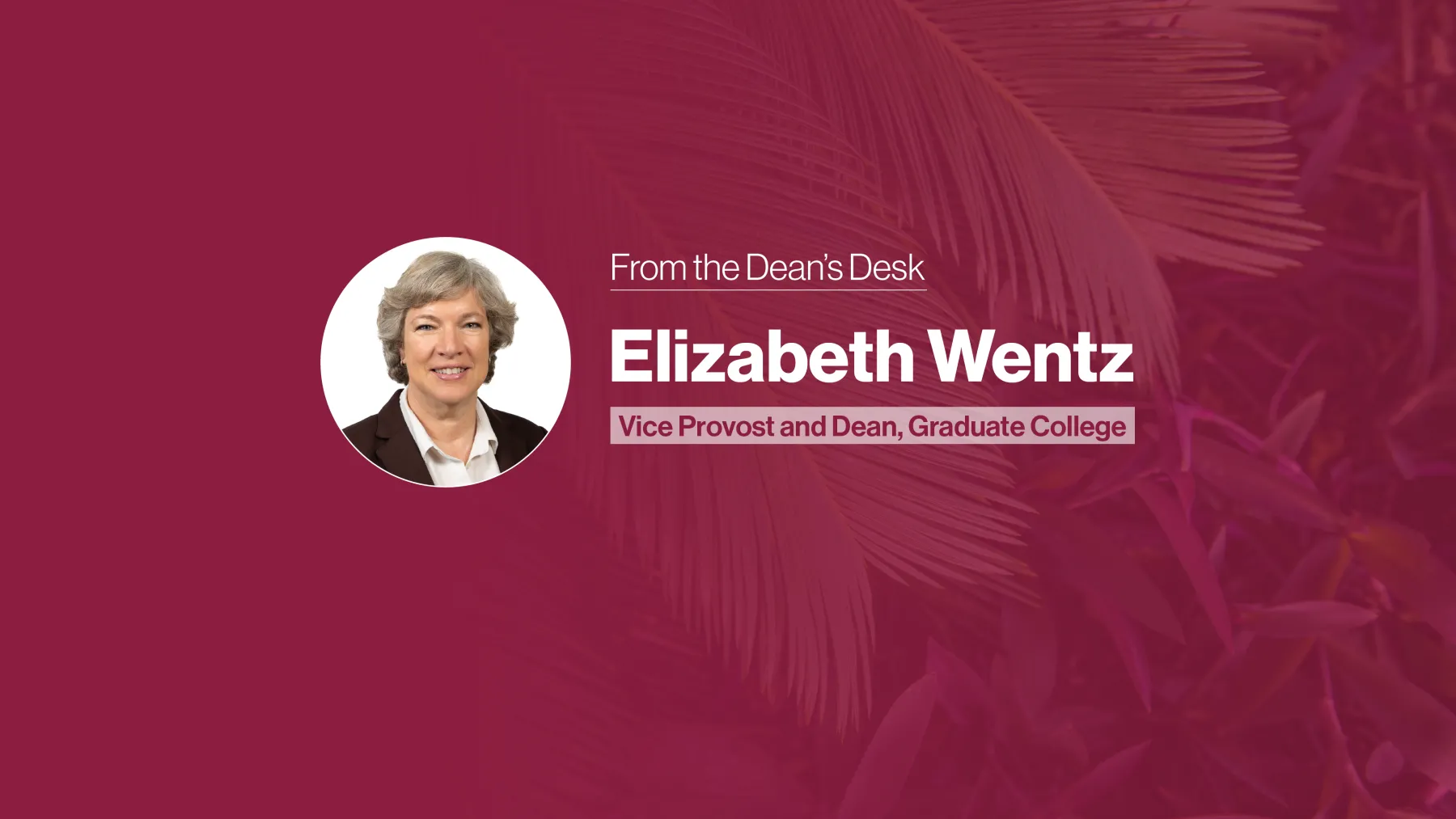
Using data to inform decision-making
I think it’s fair to say that people are always looking for ways to be successful. Whether that is in personal endeavors, side projects or in this context of academic and career pursuits. Over the years, I’ve concluded that success is determined by two tenants: who and what you know.
I’ve frequently talked about the first (who you know) in this blog and at graduate student events. But I want to talk about the second tenant for this edition of the Dean’s Desk. The idea behind “what you know” hinges on using data to inform decision-making.
In decision-making, most of us want to make the best decision possible and one that leads to the best outcome. For example, online consumer reviews help us weigh the pros and cons of which items to purchase. We often use data to help us make or understand our choices. But how reliable is the data?
Translating data into real-world decisions
After I finished my master’s degree, my first job was at the University of Rhode Island, where I was a research associate for a project called the Narragansett Bay Project. The project's goal was to use data to inform policies for the health of Narragansett Bay. One policy we evaluated was assessing how many days public beaches and access to fishing should be closed after a rain event. This was a concern because the area's water treatment facilities relied on combined sewer overflows, a.k.a. CSOs. CSOs collect both sewage and rainwater during storm events and this runoff flows directly into the bay.
At the time, the policy was that beaches and fishing were closed for three days after a rain event. But no one knew if three days were sufficient to protect the health of swimmers and the fish caught or if that was too long and had a negative economic impact. The data just wasn’t available.
My job was to support collecting this data and mapping water samples. The data I was provided were the water samples of bacteria and other pollution indicators and the location where the samples were collected (latitude and longitude). I also had to record whether the sample was collected before, during or after a rain event.
After data collection and consultation with experts, our analysis suggested that deciding to close beaches and fishing was nuanced – and had to be nuanced. This decision needs to depend on the amount of rainfall, time of year and other variables.
Recently, I read that the Rhode Island Department of Environmental Management closed the bay for seven days due to excessive rain. (If you’re curious, this story map shows the continuation of this research through the years.)
Data does not always tell the whole truth, your decision-making must incorporate experience and wisdom and, at times, embrace nuance.
While searching for a clear-cut, one-size-fits-all solution may be tempting, the reality is that the best course of action depends on the specific circumstances. Given the findings within a project, we must remain open-minded while exploring different possibilities and finding creative solutions.
I am excited to see where our continued data exploration will take us and look forward to seeing its positive impact on our work at ASU.
– Dean Wentz, Vice Provost and Dean, Graduate College